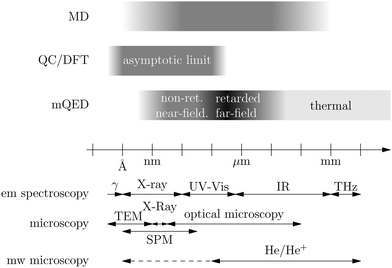For electromagnetism, such targeted properties include field enhancements around the bandgap of a semiconductor used for solar cells, directional decay in topological insulators, high kinetic inductance in superconducting circuits, and many more. Despite very different application areas, all of these properties are united by the common aim of exploiting collective interaction effects between quantum objects.
The literature on the topic spreads over very many different disciplines and scientific communities.
In this review, we present a cross-disciplinary overview of different approaches for the creation, analysis and theoretical description of nanocomposites with applications related to electromagnetic properties.
Fiedler, J., Berland, K., Borchert, J., Corkery, R., Eisfeld, A., Gelbwaser-Klimovsky, G., Greve, M., Holst, B., Jacobs, K., Kruger, M., Parsons, D., Persson, C., Presselt, M., Reisinger, T., Scheel, S., Stienkemeier, F., Tømterud, M., Walter, M., Weitz, R. T., & Zalieckas, J. (2023). Perspectives on weak interactions in complex materials at different length scales. Phys. Chem. Chem. Phys. 25, 2671. https://doi.org/10.1039/D2CP03349F.
